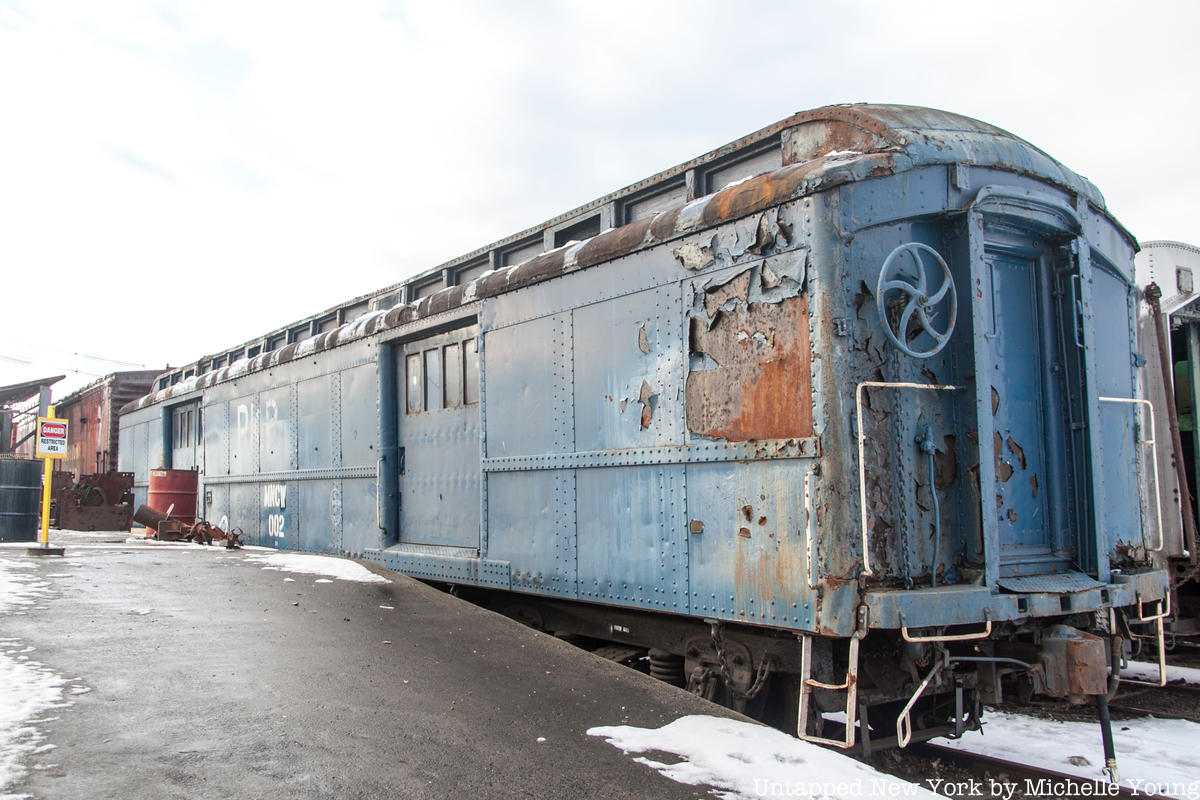Like all of the most beloved places around the world, Grand Central Terminal is full of myths. After all, the feat of the building’s construction and its later resurrection is legend-worthy — who would believe that people wanted to tear the whole thing down? One of the terminal’s most persistent tales (in addition to the myth of the Redstone rocket poking a hole through the ceiling), is that of the secret “FDR Train Car.” The story has become more dramatic over time, if you follow the writing and hearsay, and the latest version goes like this: President Franklin Delano Roosevelt, paralyzed from the waist down from polio, would frequently be transported in his bullet proof, armor-plated Pierce-Arrow limousine onto his own train car, which would pull into Grand Central on Track 61. The limousine would then drive directly out onto the platform (a “siding” next to Track 61), then onto an elevator that rose directly into the Waldorf-Astoria Hotel. That train car has supposedly been sitting on Track 61 since 1945, until recently.
On a tip from Josh Vogel, the manager and curator of the Skyscraper Museum and the man behind the Instagram account and website NYC Urbanism, I took a trip up to the Danbury Railway Museum on a very specific mission: to see the famous “FDR Car” in the flesh, which had arrived just a few months ago, and locate the evidence that might dispel the famous FDR train car myth, which rail enthusiasts have been trying to correct for many years.
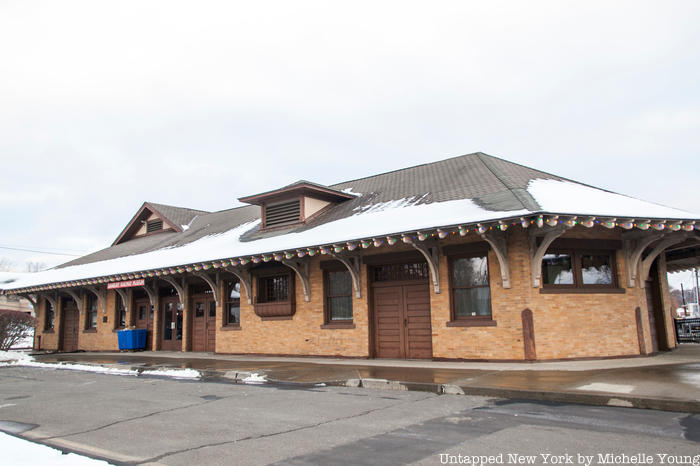
The Danbury Railway Museum sits proudly behind the World’s Tallest Uncle Sam, in a handsome brick and sandstone station, the former Union Station on the New York, New Haven and Hartford Railroad line. I meet with two of the museum’s stalwart stewards, Stan Madyda and Steve Gould, in a classic diner across the street, which the two jokingly call the museum’s satellite office. (A flood over the first weekend of December took out the water, heat, and electricity at the museum, but it will be open to the public again this weekend).
Stan is the President and the Reference and Research Library Accessions Manager, responsible for acquiring trains for donation to the museum, and Steve is the museum’s secretary. Both are passionate volunteers, donating their time to the preservation of rail history. Steve is a former Vice President of Pepperidge Farms and Stan is currently Senior Vice President at Estee Marketing Group, Inc.
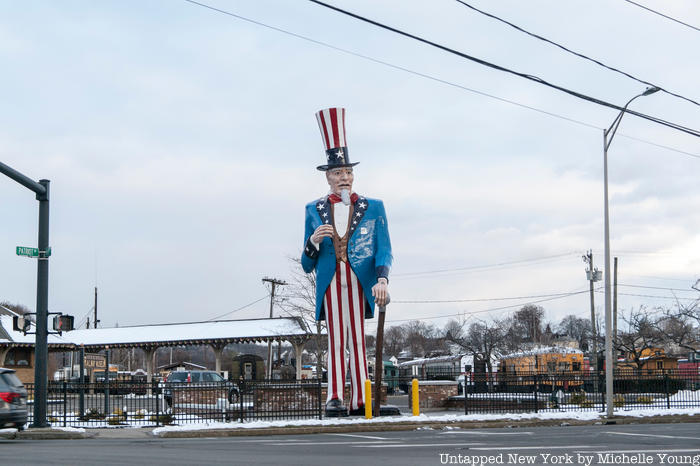
Connected to the Danbury Railway Museum’s station building is a large rail yard, containing many unique treasures including a fully restored Pennsylvania Railroad Railway post office car and an adorable caboose from the New York Central rail system. If the diner didn’t suffice, Stan and Steve were planning to get a fire going inside the caboose for our meeting!
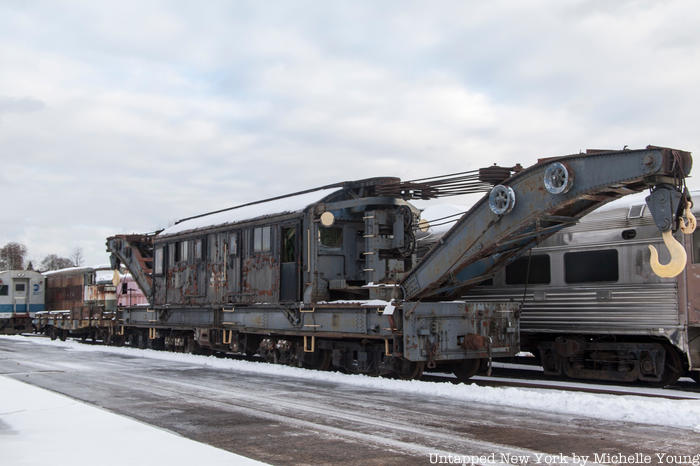 The GCT-1 wrecker
The GCT-1 wrecker
Less flashy, but central to our story is the presence of a wrecker or double ended crane, known as the GCT-1, and two idler flat cars, the MNCX #003 and #011, all built in 1914. The Danbury Railway Museum has been in possession of the three since July of 1998 and had been waiting for the final piece of the “wreck train”: the MNCX #002 (or as you will see later, the MNCW #002). This is the very car, photographed for so many publications and written about at length, that was supposedly used by FDR and had been sitting on a track deep below Grand Central since the end of World War II. The museum’s president at the time had turned down this train car for their collection back in 1998, but in the intervening time period, the museum volunteers have witnessed the proliferation of the FDR train car myth with both amusement and chagrin.
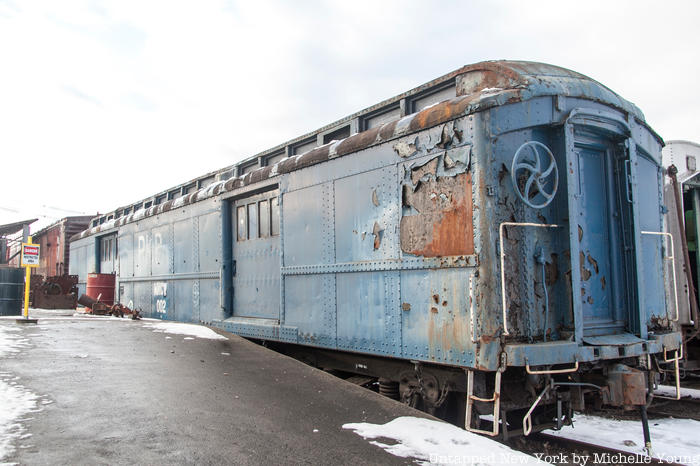
As I sit with Stan and Steve, it becomes clear that nearly every part of the famous story of the FDR car can be debunked. In a very thorough piece for a Trains magazine issue devoted to rail myths in April 2012, Karl Zimmerman writes in an article about Track 61 that “[Dan] Brucker is the true believer of the ‘FDR siding’ mystique and the keeper of the flame.” Brucker is the former manager of tours at Metro-North with whom I had once taken a group of thirty Untapped New York writers, photographers, and tour guides to traverse the off-limits places of Grand Central Terminal with. Brucker had a flair for the performance, a deep love for Grand Central, and the access he provided was unparalleled. It was easily one of the most memorable New York City experiences I’ve ever had.
The Trains magazine issue is unfortunately not available online but Stan and Steve provided me with a photocopy of it. The article also names the sources of other mentions of the FDR car in respected books and articles that helped promulgate the myth over the last two decades.
“When we received the car, the editor for a model railroad magazine told me the first thing I needed to do was hang a banner that read ‘this is not FDR’s car,” jokes Stan, “Dan [Brucker] just had the story in his head that it was the Roosevelt car. And he kind of made it sound like Roosevelt would be sitting in his limousine and it would drive onto the elevator. When you see the door [of the train car], just try to imagine a limousine trying to get through there. I mean Roosevelt would have gone through the two of his terms just trying to get in and out!”
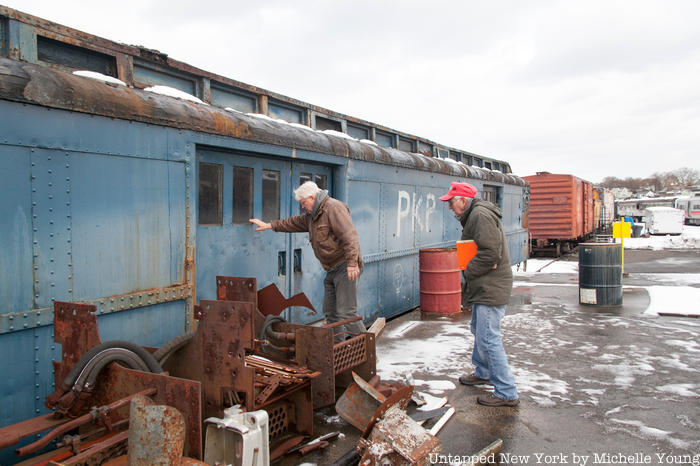 Stan Madyda and Steve Gould leading me into the train car
Stan Madyda and Steve Gould leading me into the train car
We walk to nearly the back of the rail yard and finally get to the pièce de résistance. There it is, rusting as it had been beneath Grand Central with an upper layer of peeling blue paint, the rows of rivets on the steel exterior, and the very recognizable brake wheels on both sides. You can see the original Pullman forest green color of the car in all the places where the blue paint is coming off.
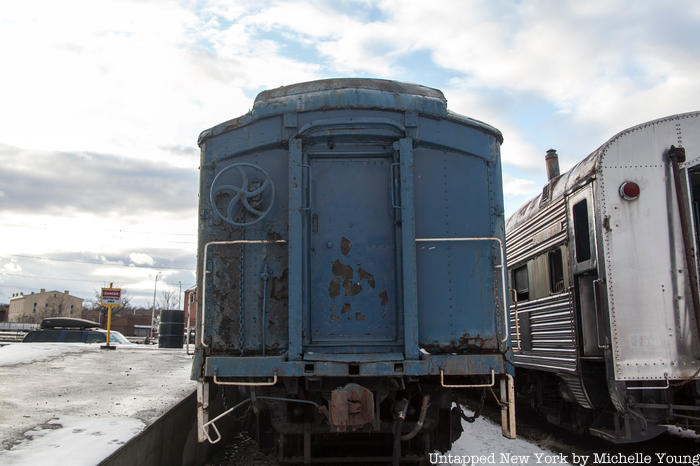
The kicker of the whole story is that the train is, and has always been, extremely utilitarian. According to both the Danbury Railway Museum and Metro-North, the MNCX or MNCW #002 train car is a “tool car” or a “baggage car,” used to hold blocks, frogs and other tools needed to clear and rerail a train car after derailments and other accidents. This one is particularly notable, not because of FDR’s alleged use of it, but because it is one of the only ones left of its kind. Because it had been used for storage under Grand Central, it managed to escape getting scrapped all these years. Today, Metro-North uses a rubber-tired highway capable “Wrecking Crane’ and a “Block Truck” that travels to a location by road and then has the capability to travel on rails. (Maybe you’ve seen a truck sitting on the train tracks at a train platform assisting some kind of construction — that’s what these types of newer vehicles are like).
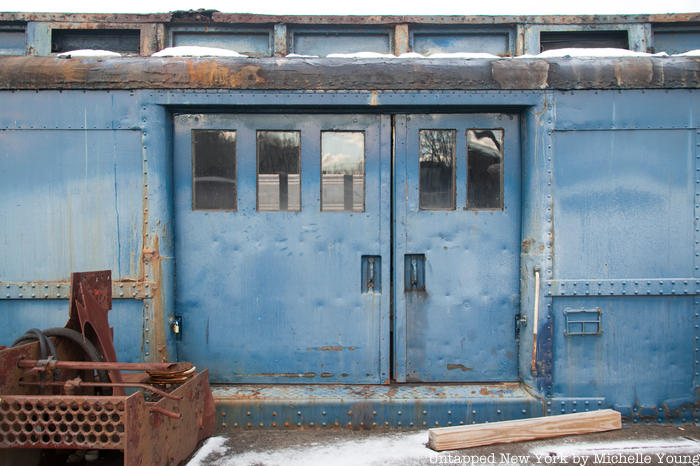
Down to more of the details, the widest door of this baggage car on its side could potentially fit an armored plated limousine but it would not have been able to make the turn to fit within the train car itself. The inside is mundane with a wood floor, a generator on one end, and hooks lining the walls for tools — nothing presidential inside.
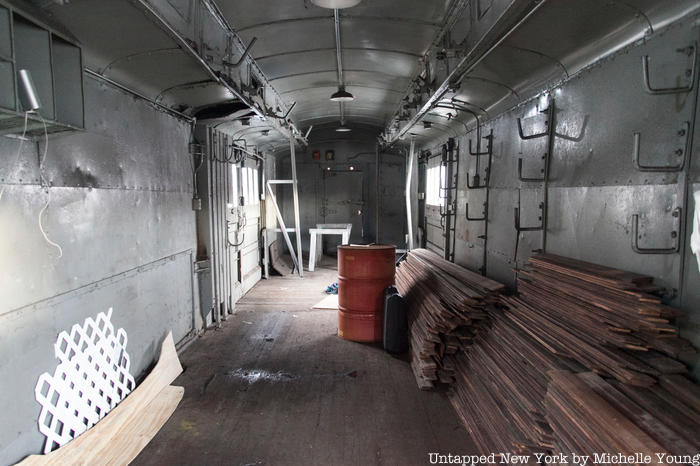
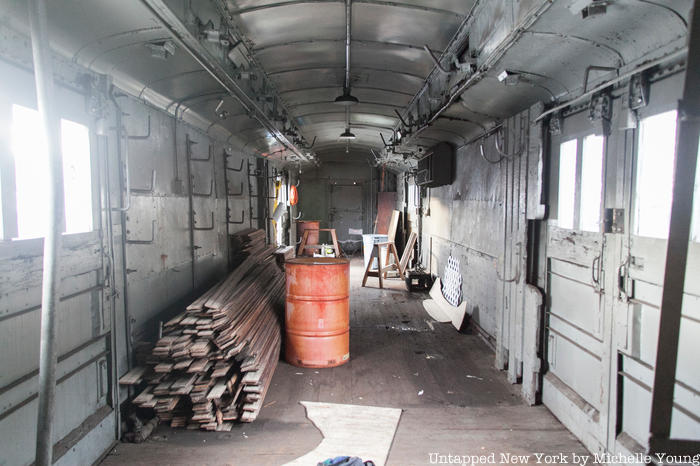
Glass windows line the clerestory of the train, which Brucker “says were converted gun ports,” according to Zimmerman who took a tour with him, but Stan and Steve say the windows were just for ventilation. These types of windows can be seen on many train cars from this time period, before the advent of air conditioning, whether on functional trains or fancy ones like August Belmont Jr.’s private subway car. The rivets and siding on the train car, said to be bullet-proof armor that was added, were standard to New York Central box cars at the time, writes Josh Vogel.
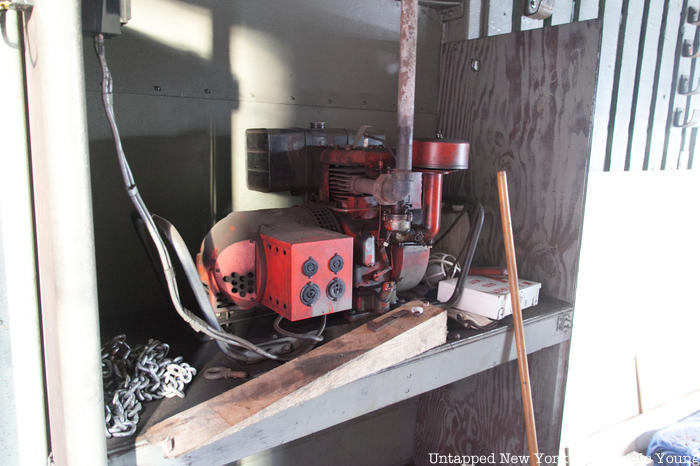
Brucker had contended that the train car did not belong to Metro-North at all, which fit conveniently into the narrative that it was part of FDR’s travel entourage. He told Zimmerman “We know it’s not our car because the reporting marks end in ‘X’ which indicates a car is not in railroad ownership.” The Association of American Railroads, which maintains what are known as the railroad reporting marks, defines “X” marks as “assigned to railcar owners that are not common carrier railroads. These may include private car owners, leasing companies, and railroad museums.” So that claim may be true, but it does not necessarily mean that the car was not utilized within the Metro-North system, or for use exclusively by Roosevelt.
Stan from the Danbury Railway Museum tells me, “We have a reporting mark of DRMX and each year we have to pay a fee to renew it. My guess is the MNCX was one used by Metro-North on their formation and never renewed. We have another baggage car in our collection that we got over 20 years ago with the MNCX reporting mark.” In addition, Stan says that Brucker had described the X as denoting a military car, but “that is partially incorrect. The Department of Defense railroad cars do end in an X as well as thousands of privately owned cars.”
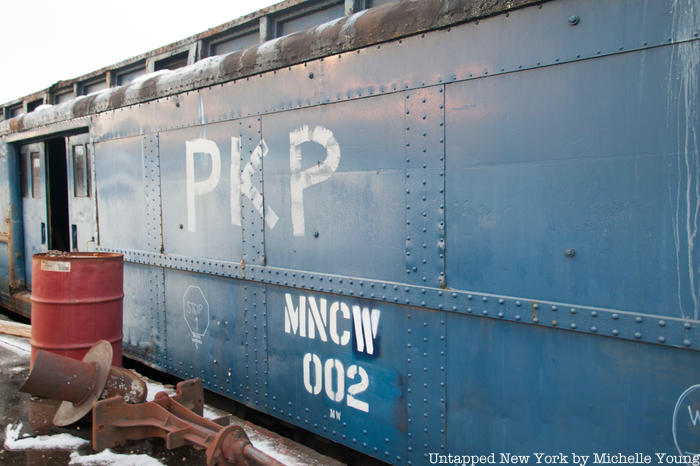
Adding more fuel to the fire, the train arrived to Metro-North’s Highbridge shop in the Bronx around May of this year having its MNCX designation, as seen on photographs shared by a Metro-North employee on NYC Urbanism. But Metro-North had repainted the last letter to be a W, before the train went up on its recent journey to the Danbury Railway Museum. Most damningly, according to Metro-North, the MNCX designation on this train was actually incorrect so it was corrected to MNCW.
Digging further, the MNCX reporting mark was only added for the first time in July 1957, according to this compilation of marks, used for the company Maintenance, Inc. So, it would have not been used while Roosevelt was in office. It was eliminated from use in 1962, and reinstated for the company, Minnesota Corn Processors, Inc. in 1985. Thus, for the move from Highbridge to Danbury, the car used an active designation, MCNW, the reporting mark for Metro-North.
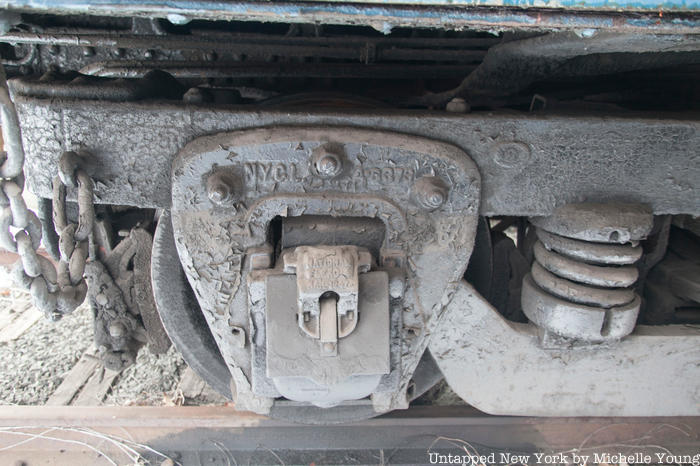
Additional clues come from viewing the train up close as we did. The journal boxes located on the sideframe of the train car have the acronym NYCL (New York Central Lines) embossed on it. If you open the journal boxes, you can still see the old rags that were packed in, soaked with oil, to reduce the friction of the axle. If you look at the top of the side of the train, you can just see the remnants of the lettering that once said New York Central, the letters long removed and painted over. There are also faint car numbers on both end doors, indicating number 7847, which I have been told are “appropriate NYC baggage car numbers”, and the remnants of the number 24206, seen under the MNCW #002 on the side is “likely an NYC or Penn Central MOW number.”
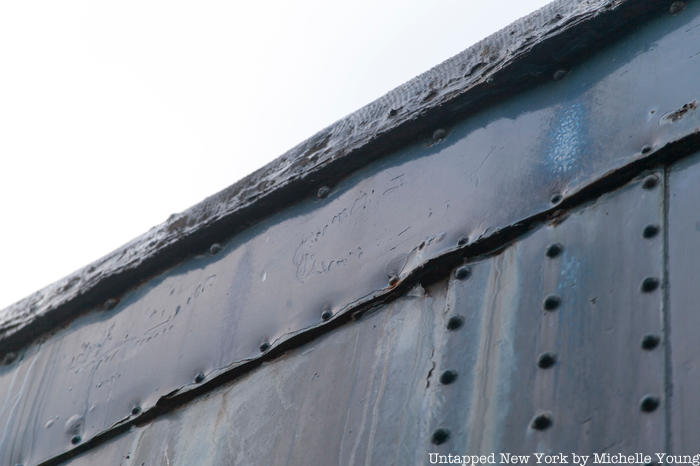
In the book The President Travels by Train: Politics and Pullmans, the author Bob Withers actually reveals the very railcar that FDR used for his limousine: the Baltimore & Ohio No. 748. This car was used prior to Roosevelt’s terms as U.S. President to transport horses. “Most pertinent,” Zimmerman writes when referencing this book, this train car model “also had end doors, ideal for automobile transport.” No. 748 was the car that carried President Roosevelt, a bulletproof Packard car, and two Secret Service cars to Warm Springs, Georgia on Roosevelt’s final train trip before he died on April 12, 1945. Curiously, no mention of a Pierce-Arrow here.
Did Roosevelt even use a Pierce-Arrow limousine? We have not seen this detail dissected yet. Pierce-Arrow limousines were known to be used by previous Presidents William Howard Taft, Warren Harding, Calvin Coolidge, and Herbert Hoover, who directly preceded Roosevelt. But a Pierce-Arrow limousine that was used by Hoover was replaced by a Packard and Cadillac V-16, sometime after his inauguration, according to the Chicago Tribune. Time Magazine reported in 1935 that Pierce-Arrow sent a limousine to Roosevelt, but by 1938, the company went out of business.
In the book The Sunshine Special: FDR’s 1939 Lincoln K Series Presidential Limousine, author Brody Levesque writes that Ford Company president Edsel Ford “lobbied to obtain a government contract to provide a presidential limousine for FDR’s use.” So by 1939, Roosevelt was using his “Sunshine Special,” a Lincoln K-series four-door convertible limousine built to Secret Service specifications. After Pearl Harbor, it was given a war-worthy upgrade. Among the specifications: armored plating, bullet-resistant windows 1 1/8 inch thick, bullet-resistant dividers inside, and “run-flat” tires that could still run even if shot. It seems almost certain that the myth perpetuators were getting the car confused with the “Sunshine Special.”

Zimmerman writes in the Trains article that the siding, the platform next to Track 61, actually “predates the hotel (and Roosevelt’s presidency) by decades. And in fact, until it was moved, the baggage car was sitting on Track 63, not 61 because the rails of Track 61 had been replaced by “concrete slabs to support new emergency generators.” It is true that an elevator and stairway connect the Track 61 platform with the “hotel’s outer skin,” writes Zimmerman, but the elevator is believed to have been built during the construction of the Waldorf-Astoria and not “designed specifically for the size and weight of the Pierce-Arrow limousine,” as Brucker said in the interview with Zimmerman. Side note: Track 61 and 63 were originally built to serve a steam powerhouse that once existed on 49th Street that served Grand Central and other buildings in the area, and may have been used by New York, New Haven & Hartford train engines waiting to go into service.
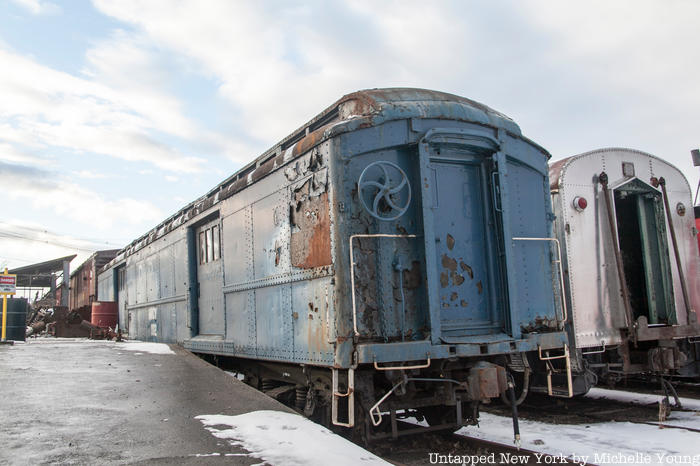
This is not all to say that Roosevelt did not use the platform. In fact, there is one Secret Service-documented trip in which Roosevelt used it, on October 21, 1944 for a campaign trip in New York City. Zimmerman writes that Roosevelt “disembarked from the [Pullman presidential train car, the Ferdinand] Magellan at the Brooklyn Army Terminal, going from there to the Brooklyn Navy Yard, Ebbets Field, and numerous other spots before arriving at the Waldorf-Astoria after an exhausting 12-hour day, bareheaded in the rain in his open-top Packard. The vehicle was likely unloaded at the Army Terminal from B&O horse-express car No. 748, which was in the consist of his train throughout this campaign.” There is no mention of a Pierce-Arrow in this account.
Roosevelt gave a foreign policy address at the Waldorf-Astoria, according to William D. Middleton in the 1977 book Grand Central: the World’s Greatest Railway Terminal. Middeton says FDR then “descended into the ‘basement’ to the presidential rail car for the journey home to Hyde Park.” The Secret Service memorandum from that visit states “At 10:05 p.m., the President will leave the hotel over the same route he entered, i.e., via east side Lexington Avenue elevator, and will then proceed via New York Central elevators to the New York Central Rail[road] siding, located in the basement of the hotel, where his car will have been spotted…” Presumably, the word “car” here means railcar, but you can see where some possible confusion can be traced to. Zimmerman writes that from the Waldorf-Astoria, FDR returned to Hyde Park, “in the quiet and comfort of the railcar he loved” (the Ferdinand Magellan, which likely had the Packard in tow).
 What is supposedly the elevator door opening inside the Waldorf-Astoria
What is supposedly the elevator door opening inside the Waldorf-Astoria
The elevator from Track 61 is also real, but it appears to have opened into the Waldorf-Astoria garage, not directly into the hotel. Zimmerman writes, “Now, the lobby elevator is said to have been sealed off, and the elevator mechanism dismantled. Or maybe it hasn’t. In fact, an ‘auto lift’ on the 50th Street side of the Waldorf serves the basement, ground level, and floors 1 through 3, and once brought automobiles into the ballroom for shows. Though this elevator has no access to the railroad, it may have been conflated with FDR’s elevating Pierce-Arrow.” And, it appears that Track 61 does has additional Presidential history beyond Roosevelt: it was reportedly used as an “escape option” by the Secret Service for President George W. Bush, Secretary of State Colin Powell and National Security Adviser Condoleezza Rice in 2003 while in meetings for the U.N. General Assembly, according to an article in The New York Post (although it has no named sources for this information).
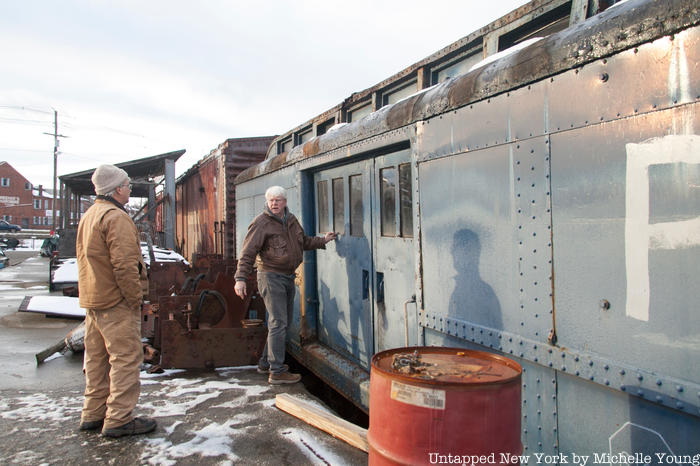
The FDR Packard was in the New York State Museum in Albany until Governor Andrew M. Cuomo had it restored to working condition (to the tune of $10,440), and subsequently drove it to make the first ceremonial crossing on the new Kosciuszko Bridge in 2017. The Sunshine Special is on display at the Henry Ford Museum in Dearborn, Michigan. The museum has confirmed for us that width of the limousine is 76.5″ which means it could have entered the side door of the baggage car (which is 95″), but it was also 20 feet and 5 inches long – so there is definitely no way it could have gotten on.
 Governor Andrew M. Cuomo crossing the Kosciuszko Bridge in the 1932 FDR Packard car in 2017
Governor Andrew M. Cuomo crossing the Kosciuszko Bridge in the 1932 FDR Packard car in 2017
The most exciting news for everyone who did not have the opportunity to go on Dan Brucker’s tour of Grand Central Terminal is that baggage car MNCW #002 is available for the public to view now at the Danbury Railway Museum. This weekend, the museum is hosting its annual Santa train rides, which run within the rail yard, this Friday, Saturday and Sunday, and the weekend after. You can also visit the gorgeously restored Pennsylvania Railroad Railway Post Office car, which was used to sort mail on the go and see other Penn Central and New York Central train cars, and visit the extensive museum.
Join us on our next tour of the Secrets of Grand Central!






